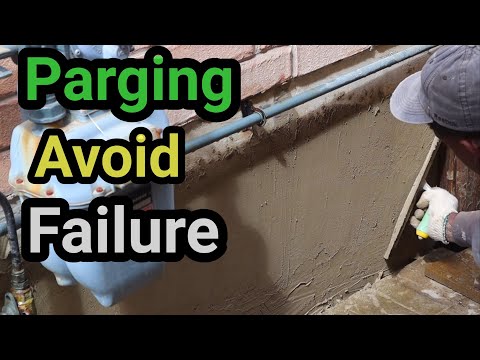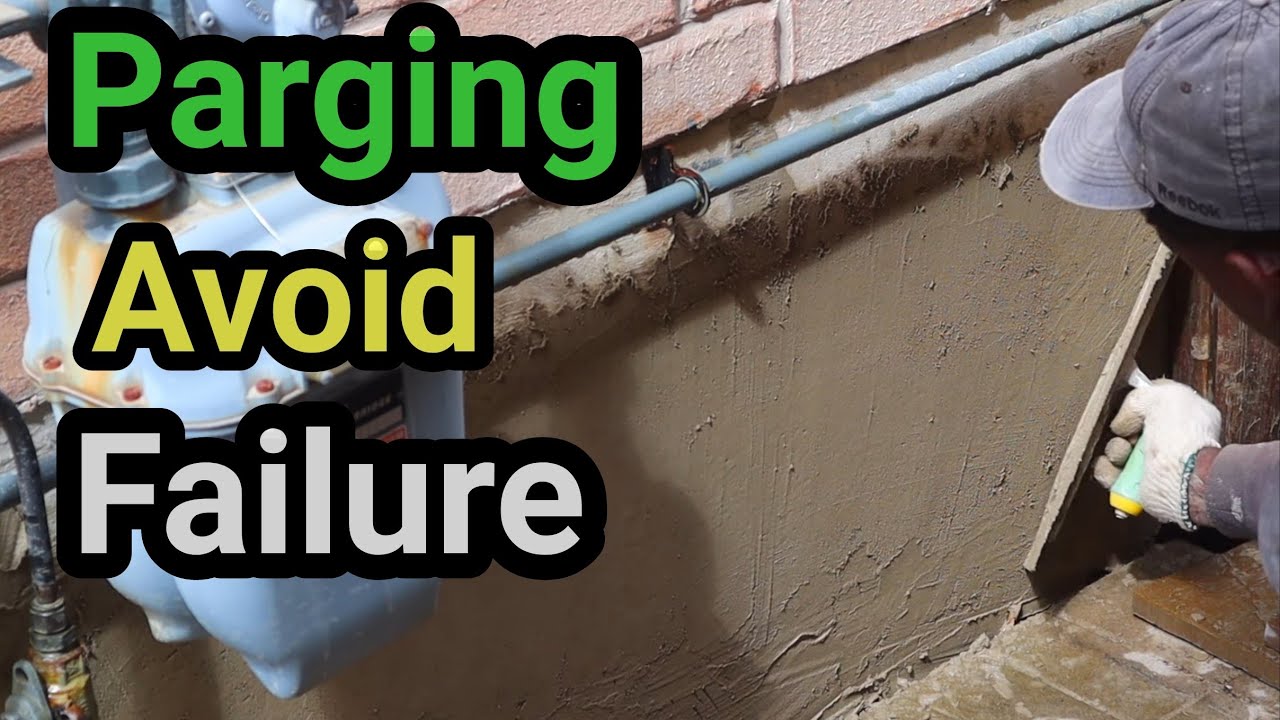Parging a foundation is a crucial process that involves applying a thin coat of mortar or cement mixture to the exterior surface of a building's foundation walls. This protective layer not only enhances the aesthetic appeal of the foundation but also serves as a shield against various external elements like moisture, weathering, and deterioration. Parging brings durability to foundations by preventing cracks, leaks, and potential structural damage, ultimately extending the lifespan of the building. Additionally, this technique acts as an insulator, providing thermal resistance and reducing energy loss. The artistry involved in parging allows for customization, enabling homeowners to choose from various textures, colors, and finishes, thus adding a touch of personal style to their property. Whether renovating an existing structure or constructing a new one, parging a foundation is a crucial step that ensures the stability, protection, and visual appeal of the building. Invest in parging to enhance your property's curb appeal, protect it from the elements, and maintain its structural integrity for years to come.

Understanding Parging a Foundation
| Term | Description |
|---|---|
| Parging | Parging refers to the process of applying a thin coat of mortar or cement mixture to the exterior surface of a foundation wall. It serves both functional and aesthetic purposes, providing protection against weather elements and enhancing the overall appearance of the foundation. |
| Materials | The most commonly used materials for parging include cement, sand, lime, and water. These components are mixed in specific ratios to create a durable and workable parging mixture. Additionally, additives such as acrylic or latex can be incorporated to enhance the adhesive qualities and flexibility of the parging material. |
| Application | Parging is typically applied in multiple thin coats using a trowel. The first coat, known as a scratch coat, creates a rough surface for the subsequent coats to adhere to. Once the scratch coat is dry, additional coats are applied and smoothed out to achieve a uniform and aesthetically pleasing finish. It is crucial to properly prepare the foundation surface by cleaning, filling any cracks or voids, and dampening it before applying the parging mixture. |
| Functionality | Beyond its visual appeal, parging offers several functional benefits. It acts as a protective barrier, shielding the foundation from moisture, extreme temperatures, and other environmental factors that may lead to deterioration. Parging also helps to prevent water infiltration, reducing the risk of basement leaks and potential foundation damage. |
| Maintenance | To ensure the longevity of a parged foundation, regular maintenance is essential. Periodic inspections should be conducted to identify any signs of cracks, crumbling, or detachment. Small repairs or touch-ups can be carried out using appropriate parging materials. Additionally, it is recommended to keep the parged surface clean and free from debris to avoid potential issues. |
Avoiding Parging Fails: Mastering the Art of Concrete Wall Parging
What is Parging a Foundation?
When it comes to the structural integrity of a building, the foundation plays a crucial role. Over time, however, the foundation may become damaged due to various factors such as weather conditions, settling, or poor construction. One common method used to repair and protect a damaged foundation is called parging. Parging involves applying a thin coat of cement-based mortar to the exterior surface of a foundation, providing a protective layer that helps to prevent further damage and improve the appearance of the building.
The Importance of Parging
Parging is an essential step in maintaining the overall strength and longevity of a foundation. The exposed exterior surfaces of foundations are vulnerable to erosion, cracks, and water penetration. By applying a layer of mortar, the foundation becomes more resistant to these issues.
The Process of Parging
The process of parging a foundation typically involves several steps. First, the existing surface of the foundation needs to be prepared by removing any loose or damaged material. This can be done by chipping away the deteriorated areas and cleaning the surface thoroughly.
Once the surface is prepared, a mixture of cement, sand, and water is created to form a mortar. This mortar is then applied to the foundation using a trowel, starting from the bottom and working upwards. It is important to apply the mortar in thin and even layers to ensure a smooth and consistent finish.
After the initial layer is applied, it is allowed to dry for a certain period of time. Once dry, additional layers can be added if necessary, depending on the desired thickness and the condition of the foundation. Finally, the surface can be finished by using a trowel or a sponge to achieve the desired texture.
The Benefits of Parging
Parging offers several benefits to both the structural integrity of the foundation and the overall appearance of the building.
Protection against moisture: The primary benefit of parging is its ability to protect the foundation from moisture damage. When water seeps into the foundation, it can cause cracks, deterioration, and even structural instability. Parging acts as a barrier, preventing water from penetrating the foundation and reducing the risk of damage.
Improved aesthetics: Parging can significantly enhance the visual appeal of a building. By covering up unsightly cracks, chips, or other imperfections, parging creates a smooth and uniform appearance on the foundation's exterior. This can greatly improve the curb appeal of the building, which is particularly important for those looking to sell or rent their property.
Increased durability: Parging reinforces the foundation, making it more resistant to wear and tear. It helps to prevent further damage caused by weather conditions, freeze-thaw cycles, or other external factors. By strengthening the foundation, parging contributes to the overall longevity of the building.
Maintaining Parged Foundations
While parging provides significant benefits, it is important to maintain the repaired foundation to maximize its effectiveness and lifespan.
Regular inspection: It is recommended to inspect the parged foundation periodically for any signs of damage, such as cracks or erosion. Early detection of issues allows for timely repairs, preventing further damage and maintaining the integrity of the foundation.
Proper drainage: Ensuring proper drainage around the foundation is crucial in preventing water accumulation and potential damage to the parging. Gutters and downspouts should be kept clear to divert water away from the foundation, and the grading around the building should slope away from the foundation.
Repairing damages: If any cracks or damage are detected, it is important to address them promptly. Small cracks can be filled with specialized sealants, while larger damages may require professional assistance for proper repairs.
Conclusion
Parging a foundation is a vital process in maintaining the strength, durability, and appearance of a building's foundation. By providing a protective barrier against moisture and improving the aesthetics, parging helps to prolong the lifespan of the foundation and enhance the overall value of the property. Regular maintenance and prompt repairs are essential to ensure the long-term effectiveness of parging and to protect the structural integrity of the building.

